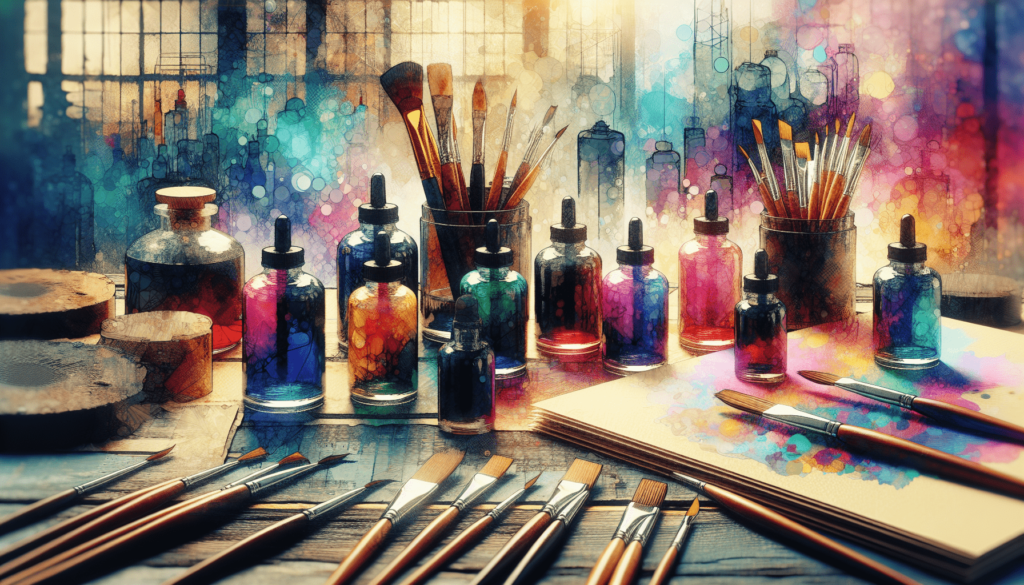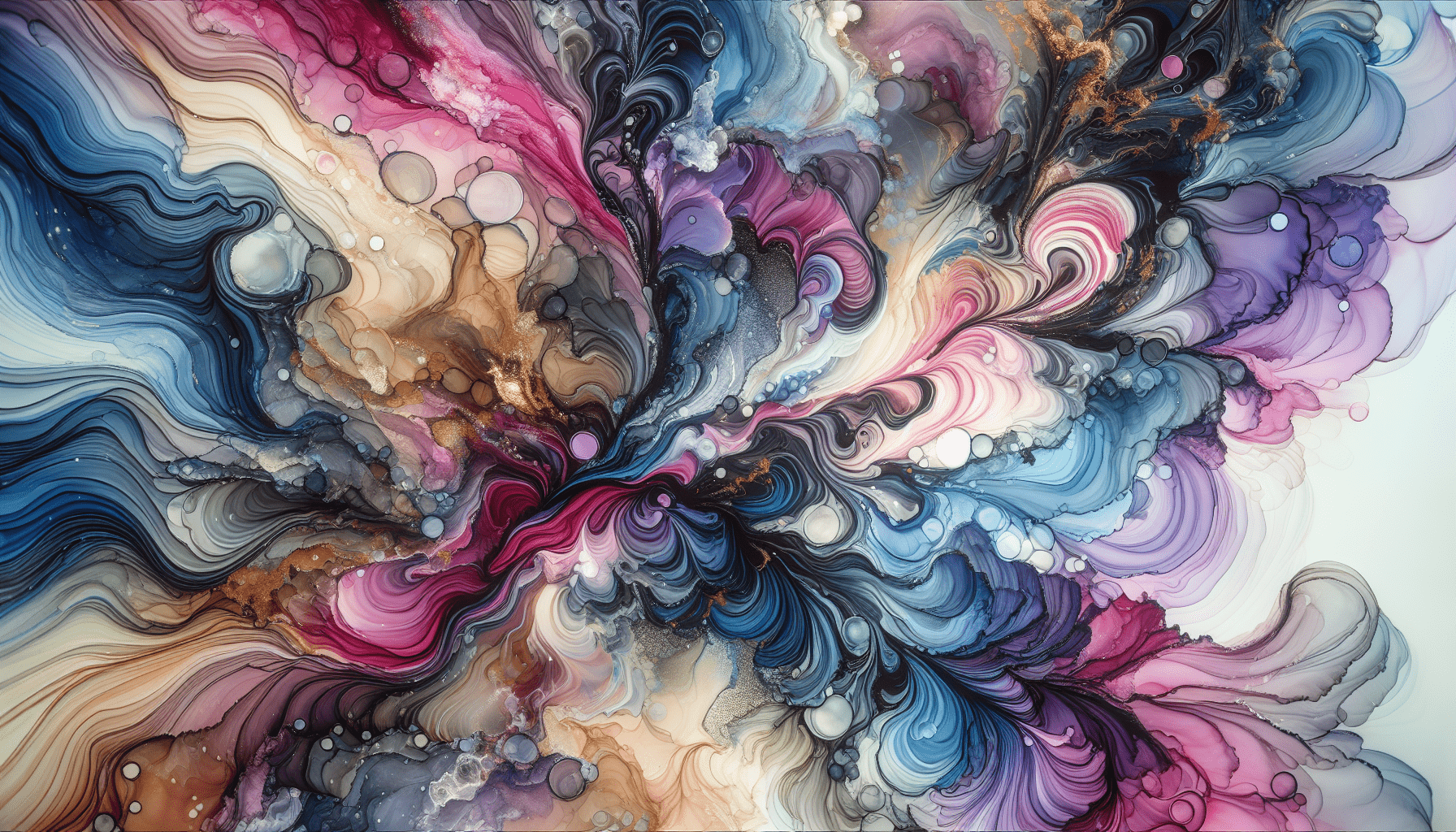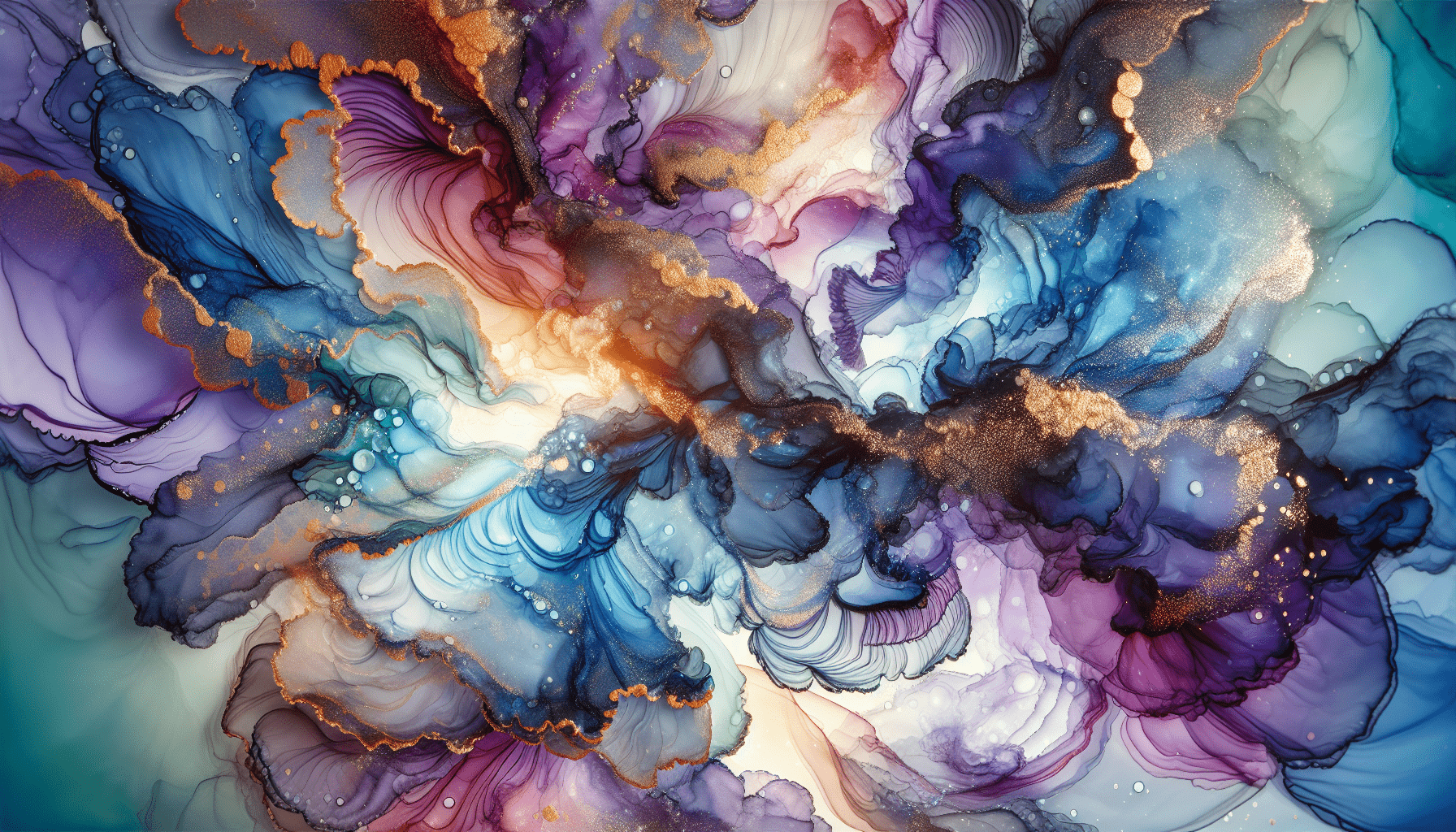Are you ready to embark on the captivating journey of alcohol ink painting but wondering what supplies you’ll need to get started? Engaging in alcohol ink art can be both exhilarating and therapeutic, allowing you to express creativity through vibrant and flowing designs. Whether you’re a seasoned artist or new to this medium, understanding the necessary supplies can make a significant difference in your artistic experience. Let’s delve into the essential materials that will help you create stunning alcohol ink paintings.
Understanding Alcohol Ink
Before gathering the necessary supplies, it’s crucial to understand what alcohol ink is. Alcohol ink is a fast-drying, highly pigmented dye that is unique due to its fluidity and vibrant colors. Unlike traditional paints, it flows freely and creates mesmerizing patterns, making it an ideal choice for abstract artworks. Its translucence allows for the creation of layering effects and various gradients, enhancing the visual appeal of your art pieces.
The Nature of Alcohol Ink
The medium is composed of dye particles suspended in ethanol, which evaporates quickly, leaving behind vivid tones. This characteristic enables the technique of layering and blending, offering opportunities for unrestricted creativity. However, this also means that timely action is required to manipulate the ink before it dries. Understanding and mastering the flow of alcohol ink will be part of your artistic journey.
Essential Alcohol Ink Supplies
As you prepare to start your alcohol ink painting journey, certain supplies are indispensable. These essentials range from the substrates you work on to the tools used to manipulate the inks. In this section, we’ll cover the must-have items to get you started.
Alcohol Inks
At the heart of this art form are alcohol inks. You’ll find them in a variety of brands, colors, and sets. Some popular options include those from Ranger, Jacquard, and Piñata. When choosing your inks, consider purchasing a selection of colors, including primary shades and metallics, to allow for greater artistic flexibility. Start with a basic set and gradually expand your collection as you grow more familiar with the medium.
Substrate Choices
The choice of substrate is an important consideration in alcohol ink painting. Generally, non-porous surfaces are preferred as they allow the ink to flow effortlessly across the surface. Here are some common substrates:
-
Yupo Paper: A synthetic paper popular in alcohol ink art because of its non-porous nature, which allows inks to sit on the surface without absorption.
-
Tile: Ceramic tiles provide a solid base for ink flow, ideal for practicing technique and creating durable art pieces.
-
Canvas: While traditional canvas isn’t suitable due to its porosity, you can use canvases treated with a special gesso to create a non-porous surface.
-
Glass and Metal: Both materials are excellent choices for their smoothness, enabling a controlled flow of the ink.
Isopropyl Alcohol
Isopropyl alcohol, often referred to as rubbing alcohol, is a crucial supply when working with alcohol ink. It serves several purposes, such as diluting inks, cleaning up areas, and facilitating the spreading of ink on your chosen surface. A 91% to 99% concentration is typically recommended for optimal results.
Applicators and Brushes
Manipulating ink flow requires an assortment of tools. While traditional brushes can be used, other specialized applicators might yield better results:
-
Blending Tools: These are used to help mix colors smoothly. Felt pads attached to handles are commonly used for this purpose.
-
Brush Pens: Filled with isopropyl alcohol, these can control spreading and assist in creating detailed work.
-
Droppers and Pipettes: These allow for precise application of inks and alcohol, letting you control the amount and location of the liquid.
Protective Supplies
Working with alcohol inks requires some precautions due to their chemical nature. Be prepared with the following protective supplies:
-
Gloves: To protect your hands from staining and potential irritation.
-
Mask and Ventilation: Due to the fumes emitted by alcohol inks and isopropyl alcohol, working in a well-ventilated area or using a protective mask is advisable.
-
Aprons or Protective Clothing: Given the vibrant and staining nature of alcohol inks, wearing clothing that can protect against spills is recommended.

Optional Supplies for Advanced Techniques
Once you’re comfortable with the basics, you might want to explore more advanced techniques that require additional supplies. These can add complexity and depth to your artwork.
Metallic Mixatives
Metallic mixatives or additives such as gold, silver, and copper offer an additional layer of sheen and sophistication to your paintings. They can be mixed with inks or applied separately for various effects.
Heat Tools
While not strictly necessary, heat tools can further expand your creative possibilities by helping to move and dry the ink across your substrate. Hair dryers or specific crafting heat tools can be used, often providing varying levels of airflow.
Embellishments
Artists often use various embellishments like glitter, embossing powders, or small beads to add texture and interest to their pieces. These optional items can help make your artwork eye-catching and distinctive.
Step-by-Step Guide to Setting Up Your Workspace
Creating art requires a dedicated workspace where you feel comfortable and organized. Here’s a guide to setting up your alcohol ink painting area:
-
Choose a Suitable Location: Ideally, work in a well-ventilated area with good lighting to manage fumes and ensure you can see your work clearly.
-
Organize Your Supplies: Keep your inks, substrates, and tools neatly organized for easy access. A small cart or shelf can help in keeping these items within reach.
-
Protect Surfaces: Cover your work table with plastic, newspaper, or a drop cloth to protect against spills.
-
Safety First: Have your gloves, mask, and apron readily available. Store isopropyl alcohol and inks safely when not in use.
-
Experimentation Space: Allocate an area or a few small substrates for experimentation. Testing new techniques on this dedicated spot can save your larger projects from potential mishaps.
Techniques and Tips for Alcohol Ink Painting
Understanding your supplies and workspace layout is just the beginning. Mastering techniques and refining your skills will elevate your creations. Here, we’ll highlight some methods and tips.
Basic Techniques
Dropping and Blending
Start by applying a few drops of alcohol ink onto your substrate. Use isopropyl alcohol to dilute and spread the colors. Employ different tools to create blends and patterns.
Layering
Due to their translucence, alcohol inks are suitable for layering. Allow initial layers to dry, then carefully apply additional colors to build depth and contrast.
Advanced Techniques
Negative Space
Create compelling visuals by deliberately leaving areas of your substrate ink-free, using them to emphasize surrounding colors.
Resists and Masking
Employ masking fluid to cover certain sections of your work before applying ink. Once dry, remove the mask to reveal patterns or shapes.
Cleanup and Maintenance
Ensuring proper cleanup helps maintain your workspace and supplies:
- Clean applicators immediately after use to prevent ink buildup.
- Dispose of or recycle any left-over materials according to safety guidelines.
- Regularly organize and review your supplies to restock essential items and dispose of expired products.
Conclusion
Alcohol ink painting opens a world of vibrant creativity and expressive freedom. By meticulously selecting your supplies and continuously refining your techniques, you’ll cultivate both skill and enjoyment in this unique art form. Each tool and material serves a distinct purpose, contributing to the overall artistic process. Be thoughtful in curating your collection of supplies to support your creative intentions, and remain open to experimenting with new methods and ideas. Ultimately, the most important component of your toolkit is your enthusiasm and willingness to explore the boundless possibilities of alcohol ink painting.



